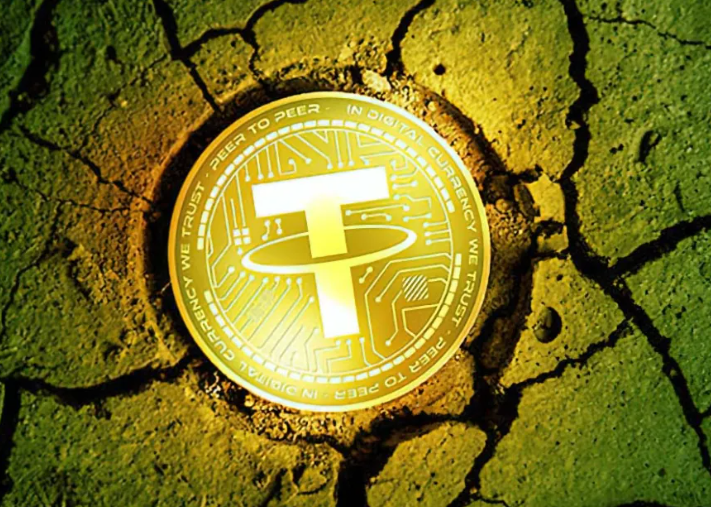In the ups and downs of cryptocurrency, 2024 has already become a year of symbolic significance. The approval of the Bitcoin ETF, a historic event, has injected a boost of confidence into the cryptocurrency market, attracting the attention of many traditional financial institutions and further moving cryptocurrencies towards the mainstream financial stage. Meanwhile, the arrival of the Bitcoin halving cycle has renewed market awareness of its scarcity, making price trends a focal point for global investors. Additionally, the political event of Trump's victory has brought many uncertainties to the cryptocurrency market, with related policy statements igniting heated discussions among market participants regarding future regulatory environments. These significant events intertwine to collectively drive the prosperity of the cryptocurrency market in 2024, with Bitcoin's price breaking the $100,000 mark, further igniting market enthusiasm.

Standing in 2025, looking back at the past, we can't help but ask: Where is the next stop for the cryptocurrency world?
1. Market Trends and Structural Changes
1.1 New Features in Bull Markets and Retail Participation
In the journey of Bitcoin breaking through $100,000, the market has shown characteristics different from previous bull markets. Traditional views hold that a significant rise in Bitcoin's price would attract a large number of retail investors, but after this breakthrough, retail participation did not surge as expected. On one hand, the high price threshold has deterred some smaller retail investors, who fear facing significant risks by entering at high levels. On the other hand, the market's investment logic is gradually changing, shifting from pure speculation to a greater focus on project fundamentals and long-term value. This has increased the difficulty of investment for retail investors lacking professional knowledge.
For instance, during the previous bull market, some altcoins and meme coins often saw significant price surges driven by market sentiment, allowing retail investors to achieve high returns through simple trend-following investments. However, in the current market environment, the altcoin market is no longer as frenzied as before. The decline in market liquidity has intensified price fluctuations of these projects and diminished the momentum for sustained increases. Many projects' prices quickly plummeted after listing, resulting in losses for investors. This phenomenon reflects the gradual rationalization of the market, where investors have begun to treat investment targets more cautiously and no longer follow trends blindly.
1.2 Institutional Leadership and Market Rationalization
Institutional investors played a crucial role in the cryptocurrency market in 2024. Following the approval of the Bitcoin ETF, a significant influx of institutional funds entered the market, bringing ample liquidity and altering the investment structure. Institutional investors typically have more professional investment teams and more comprehensive risk assessment systems, making their investment decisions based more on in-depth research of project fundamentals and market trends.
Taking Grayscale Investments as an example, its Bitcoin trust fund has attracted significant institutional investor funds. Grayscale provides investors with an indirect way to invest in Bitcoin through professional asset management, allowing institutions that cannot invest directly in Bitcoin due to compliance or other reasons to participate in the cryptocurrency market. This trend of institutional investment has gradually liberated the market from the previously irrational state dominated entirely by retail investors, leading to more rational and stable investment behaviors.

2. Technological Innovation and Application Expansion
2.1 The Continuous Evolution of Blockchain Technology
As the underlying support for cryptocurrencies, blockchain technology has made significant progress in recent years. From the initial Bitcoin blockchain to the emergence of Ethereum smart contracts, and now to the continuous emergence of various new blockchain projects, blockchain technology has greatly improved in terms of performance, scalability, and security.
For example, some emerging blockchain projects have adopted layered technology to separate transaction processing from smart contract execution, thereby increasing transaction speed and system scalability. At the same time, various innovations in consensus mechanisms have emerged, such as Proof of Stake (PoS) and Delegated Proof of Stake (DPoS), which have significantly improved energy consumption and transaction confirmation times compared to traditional Proof of Work (PoW). Additionally, the security of blockchain is continually enhancing, ensuring the safety of user assets through optimized encryption algorithms and multi-signature technologies.
2.2 Diversified Application Scenarios of Cryptocurrencies
The application scenarios of cryptocurrencies are no longer limited to simple payment and investment fields but are gradually penetrating more industries. In cross-border payments, cryptocurrencies offer a more convenient solution for global fund flows, leveraging their decentralized and low-cost advantages. Traditional cross-border payments often require multiple intermediaries, incurring high fees and long transaction times, while cryptocurrencies can achieve direct peer-to-peer transactions, significantly reducing transaction costs and time.
In the field of supply chain finance, the traceability and immutability of blockchain provide a more transparent and trustworthy trading environment for parties involved in the supply chain. By recording transaction information in the blockchain, the flow of goods and the circulation of funds can be tracked in real-time, effectively addressing the information asymmetry problem present in traditional supply chain finance and reducing financing risks.
In addition, the application of cryptocurrencies in decentralized finance (DeFi) has also made significant progress. DeFi projects build a series of financial services, such as lending, insurance, and decentralized exchanges, through smart contracts, providing users with a more open and free financial experience. For example, decentralized lending platforms allow users to borrow and lend funds without the need for traditional financial intermediaries, improving the efficiency of fund utilization.
3. Changes in the Regulatory Environment and Responses
3.1 The Differentiation and Coordination of Global Regulatory Policies
With the continuous development of the cryptocurrency market, the regulatory attitudes of various countries towards cryptocurrencies have gradually become clearer. However, due to the cross-border nature of cryptocurrencies, there is significant variation in regulatory policies across different countries and regions. Some countries maintain an open and supportive attitude towards cryptocurrencies, such as Singapore and Switzerland, which have attracted numerous cryptocurrency enterprises by establishing comprehensive regulatory frameworks and promoting the development of the local cryptocurrency industry. In contrast, some countries, such as China and India, adopt a cautious or even prohibitive stance towards cryptocurrencies, mainly due to concerns regarding financial stability and investor protection.
In this context of differentiated regulatory policies, international regulatory coordination has become particularly important. Some international organizations, such as the International Monetary Fund (IMF) and the Financial Stability Board (FSB), have begun to pay attention to the development of cryptocurrencies and are committed to establishing globally unified regulatory standards. By strengthening international cooperation and coordination, regulatory arbitrage can be avoided, maintaining stability in global financial markets.
3.2 The Consensus on Compliance Development Becomes Industry Norm
For the cryptocurrency industry, facing an increasingly stringent regulatory environment, compliance development has become a consensus in the industry. More and more cryptocurrency enterprises are proactively seeking compliance by obtaining relevant licenses and establishing sound risk management systems to meet regulatory requirements.
Taking cryptocurrency exchanges as an example, some leading exchanges actively apply for compliance licenses, such as Binance applying for digital asset trading licenses in multiple countries and regions to ensure the legality and compliance of their operations. At the same time, exchanges have also strengthened user identity verification and reviews in areas such as anti-money laundering (AML) and counter-terrorism financing (CFT), enhancing the security and transparency of transactions. Additionally, some cryptocurrency projects have begun to comply with relevant laws and regulations, such as securities laws, during their issuance and operational processes.
4. Opportunities and Challenges in Emerging Fields
4.1 The Integration of AI and Cryptocurrencies
The integration of artificial intelligence (AI) and cryptocurrencies is currently a hot trend in the industry. AI technology can provide more accurate data analysis and predictions for the cryptocurrency market, helping investors make more informed decisions. For example, by analyzing market data using machine learning algorithms, patterns in market trends and price fluctuations can be discovered, thereby providing investment recommendations for investors.
At the same time, cryptocurrencies also provide new ideas and application scenarios for AI development. The decentralized and immutable characteristics of blockchain can provide a more secure and reliable environment for AI data storage and computation. For example, some blockchain-based AI projects achieve data privacy protection and sharing by storing data on the blockchain, while also improving the training efficiency of AI models.
However, the integration of AI and cryptocurrencies also faces some challenges. On one hand, the complexity of technology requires interdisciplinary expertise for the integration of the two, which poses high demands on the technical capabilities of project teams. On the other hand, the application of AI in the cryptocurrency market may introduce new risks, such as algorithmic bias and data leakage, necessitating the establishment of corresponding regulatory mechanisms to mitigate these issues.
4.2 The Potential and Development of Bitcoin L2
Bitcoin L2 (Layer 2 scaling solutions) has gradually gained market attention in recent years. Due to the slow transaction speed and high fees of Bitcoin L1, the emergence of L2 technology aims to improve transaction processing capabilities and reduce costs by building a new network outside of the Bitcoin main chain.
Currently, various Bitcoin L2 solutions have appeared, such as the Lightning Network. The Lightning Network enables fast micro-payments for Bitcoin through the establishment of payment channels, greatly enhancing transaction efficiency. With ongoing technological improvements, Bitcoin L2 is expected to unlock a trillion-dollar market, providing more possibilities for the expansion of Bitcoin's application scenarios.
However, the development of Bitcoin L2 is not without challenges. On the technical front, issues such as compatibility and security with the Bitcoin main chain need to be addressed. Additionally, market acceptance is a key factor; more users and enterprises need to participate in the ecological construction of Bitcoin L2 to fully realize its potential.
5. Future Outlook and Investment Strategies
5.1 Uncertainty and Opportunities in Market Prospects
Looking ahead, the development of the cryptocurrency world is full of uncertainties. On one hand, driven by technological innovations and market demands, cryptocurrencies may see more application scenarios and development opportunities. For example, as the global digitalization process accelerates, the application of cryptocurrencies in the digital economy may further expand. On the other hand, changes in regulatory policies and market fluctuations could pose significant challenges to the industry.
However, it is precisely this uncertainty that also presents opportunities for investors. In market fluctuations, investors can identify investment opportunities through reasonable asset allocation and risk control. For example, during Bitcoin price corrections, investors can buy in timely and hold long-term to share in the benefits of Bitcoin's price increases. At the same time, for some innovative cryptocurrency projects, investors can also conduct early investments based on thorough research to obtain high returns from project growth.
5.2 Long-term Investment and Diversified Asset Allocation
In terms of investment strategies, long-term investment and diversified asset allocation are effective means to cope with market uncertainties. For ordinary investors, viewing Bitcoin as a long-term investment asset, similar to gold and other safe-haven assets, allows them to resist inflation and market volatility risks through long-term holding. At the same time, investors can also diversify their funds into different types of cryptocurrency projects as well as other traditional financial assets, such as stocks and bonds, to achieve diversified asset allocation.
When selecting investment projects, investors should focus more on the fundamentals and long-term value of the projects. Attention should be paid to factors such as technological strength, team background, and application scenarios, avoiding blind investments in projects lacking actual value support. Additionally, investors should maintain awareness of the market and stay informed about industry dynamics and policy changes to adjust their investment strategies accordingly.
The next stop for the cryptocurrency world is filled with uncertainty but also contains infinite possibilities. Under the combined influence of technological innovation, market demand, and regulatory policies, the cryptocurrency industry will continue to evolve. For investors and industry participants, only by maintaining keen insight and a rational investment attitude can they seize opportunities in this field filled with challenges and opportunities, achieving their development goals.

